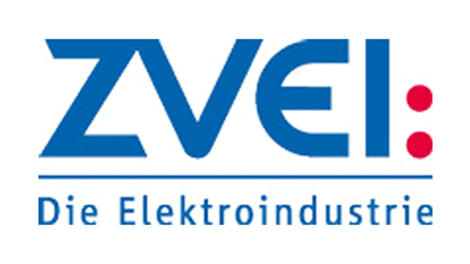ZVEI – Smart Living: ForeSightNEXT research project started
- As part of the SmartLivingNEXT technology program, ForeSightNEXT is developing the technological and economic basis for a secure, trustworthy and sustainable SmartLivingNEXT ecosystem on the basis of a shared, sovereign data space.
- The vision: In the future, AI-based smart living services should be able to run in all digitized residential buildings and thus be quickly scalable, regardless of their manufacturer-specific equipment. These services are digital services to improve energy efficiency, home care, home security and home comfort.
The aim of the research project “ForeSightNEXT – platform for data, artificial intelligence and services in the smart living ecosystem” funded by the Federal Ministry of Economics and Climate Protection (BMWK) until August 2026 is to create a universal and trustworthy smart living ecosystem that is accepted by all market participants . All data should be found here in such a way that they can be used for the development of sustainable, AI-based smart living services and applications across manufacturers and systems.
As a lead project, ForeSightNEXT is intended to support so-called satellite projects as part of the BMWK technology program “SmartLivingNEXT”, which relate to concrete, practical smart living applications, particularly in the areas of energy and care/assistance and are based on the structural elements of the lead project. The lead project ForeSightNEXT provides, among other things, a reference architecture, a toolbox and the data room. For their part, the satellite projects should bring in new components and services in order to implement practical, application- and user-related use cases in SmartLivingNEXT in order to promote scaling.
“SmartLivingNEXT aims to create the first manufacturer-independent and trustworthy ecosystem for all digital smart living services. The lead project ForeSightNEXT consists of eight consortium partners and supports the technology program’s satellites in integrating their intelligent services into the smart living ecosystem. The ForeSight platform developed as part of the AI innovation competition serves as a basis. We continue to develop these and also implement our own suitable use cases,” says Michael Schidlack, consortium leader of the ForeSightNEXT research project.
The ForeSight dataspace approach differs significantly from the established platform economy in key points. In particular, the value creation potential is not aimed at a single operator, but is accessible to the entire community – making it economically attractive for providers of devices and services. The core is the simpler but multilaterally authorized and secure exchange of data within the data space within the framework of data protection legislation and also to other data spaces that abstract from individual system worlds, manufacturers and service providers. This ensures interoperability and general data availability. The data rooms offer connectors to relevant smart home and smart building system families, cloud and streaming platforms, established IoT protocols and specific building management database systems. In addition, universally applicable AI-based basic services are being developed, which are available to support all services.
Today’s starting point for smart living technologies is a wide range of manufacturer-specific systems, cloud platforms and applications, which, however, lack a generally binding bracket. Multi-protocol devices, middleware systems and upcoming standards that are currently on the market and are constantly being developed further improve interoperability, but still offer too little market breadth for universally applicable and, above all, scalable smart living applications.
On ForeSightNEXT
ForeSightNEXT brings together eight consortium partners BEENIC GmbH, C&S Computer und Software GmbH, German Research Center for Artificial Intelligence, Research Association for Electrical Engineering at ZVEI e. V. (consortium leader), GSW Society for Settlement and Housing Baden-Württemberg mbH, Ludwig Maximilian University of Munich, Materna Information & Communications SE and Novus Software GmbH. The lead project develops offers for SmartLivingNEXT satellite projects. This includes, for example, a repository and various reference implementations for compute, test and demonstration environments with integrated basic services, including those from the previous ForeSight research project. ForeSightNEXT shapes the shared data space via standard data models and standard ontologies. The basis is formed by SENSE WoT and iotschema.org. For other important standards, suitable interfaces and mapping methods are offered if required, in order to be able to use different data models and ontologies in the data space. Together with satellite projects, the lead project forms an organizational steering committee and a technical steering committee for comprehensive coordination and service development. Furthermore, a project office serves as a central point of contact for satellite projects in order to be able to offer support to the partners on questions relating to the core competencies of the consortium partners. These primarily relate to the shared data room, the technical and AI support and support on the topics of market conformity (especially business models).
On the Research Association for Electrical Engineering at ZVEI e. V
The Research Association for Electrical Engineering at ZVEI e. V. (FE) initiates and coordinates publicly funded research projects in the electrical and digital industries. It networks companies, research institutes, specialist committees and multipliers, creates the framework for legally secure, pre-competitive cooperation with its projects and enables a rapid transfer of results from research to industrial practice. In cooperation with partners from industry and science, FE develops solutions for common technical, economic, social and ecological challenges. In doing so, it promotes innovations from Germany and strengthens the competitiveness and sovereignty of the location.
EMR Analysis
More information on ZVEI: See the full profile on EMR Executive Services
More information on Wolfgang Weber (Chairman of the Executive Board, ZVEI): See the full profile on EMR Executive Services
More information on Dr. Gunther Kegel (President, ZVEI): See the full profile on EMR Executive Services
More information on SmartLivingNEXT: https://www.digitale-technologien.de/DT/Redaktion/EN/Standardartikel/edt_foerderaufrufe_smart_living_next.html + Artificial intelligence for sustainable living and home environments.
- The aim of the “SmartLivingNEXT” funding call is to create and establish a universal, AI-based ecosystem that puts the development of intelligent and sustainability-oriented Smart Living services and applications on a new footing, simplifies it, accelerates it and makes it cost-effective. As far as possible, all relevant fields of application are to be addressed in order to illustrate the universality of the ecosystem. This should find broad acceptance in Germany and also in Europe.
- As a basis for the envisaged developments and solutions, the results already available from projects funded by the BMWK and, if necessary, other projects are to be used. The focus is on the „ForeSight“ platform, which is to be further developed within the framework of this technology programme in the form of the lead project “ForeSightNEXT – Platform for Data, Artificial Intelligence and Services in the Smart Living Ecosystem”.
- The object of the funding a research and development projects – so-called satellite projects – which relate to concrete, practical Smart Living applications and are based on the structural elements of the lead project in order to increase efficiency. The task of the lead project is in particular the overall coordination within the programme.
- In addition, basic GAIA-X concepts for trustworthy data sharing are to be taken into account.
The deadline for submissions was 6 March 2023 at 12:00.
More information on ForeSightNEXT: https://www.digitale-technologien.de/DT/Redaktion/DE/Downloads/Publikation/edt_expose_fore_sight_next.pdf?__blob=publicationFile&v=1 + https://foresight-plattform.de/ + Platform for data, artificial intelligence and services in the smart living ecosystem as part of the SmartLivingNEXT funding call.
ForeSight is the platform for context-aware, intelligent and predictive smart living services. It brings together the housing industry, technology providers, associations, trade and science to develop and test AI methods for economical operation in the living environment.
The platform consists of three elements: the ForeSight Dataspace, the ForeSight Toolbox and the ForeSight Community. These are the foundation of a broad, sustainable and user-oriented smart living ecosystem with artificial intelligence.
ForeSight establishes interoperability between existing and proven manufacturer systems and products. This makes living energy and process efficient, resilient, safe and comfortable.
More information on Michael Schidlack (Consortium Leader, ForeSightNEXT Research Project): https://www.linkedin.com/in/michaelschidlack/
More information on Federal Ministry of Economic Affairs and Climate Action (BMWK), Germany: https://www.bmwk.de/Navigation/EN/Home/home.html + The major trends of the 21st century, notably globalisation, digitisation, demographic change, recent developments within the EU, and the energy transition all represent major challenges for German business to tackle. If we are to successfully address these issues, we need to make our social market economy shipshape for the future. This is the over-arching task for the Federal Ministry for Economic Affairs and Climate Action.
- Priority for SMEs and start-ups
- Generating investments, cutting red tape
- Promoting digitisation within industrial companies and SMEs
- Designing the energy transition in a reasonable way
- Continuing the development of the European Economic and Monetary Union
Ultimately, it is a permanent goal for the Federal Ministry for Economic Affairs and Climate Action to ensure both Germany’s competitiveness and a high level of employment. The Ministry wants to help achieve this by using the legislative, administrative, and coordinating role it has in the fields of energy, industrial, innovation, competition, SME, and European policy.
More information on Dr. Robert Habeck (Federal Minister for Economic Affairs and Climate Action (BMWK), Germany): https://www.bmwk.de/Navigation/EN/Ministry/Minister/minister.html
EMR Additional Notes:
- AI – Artificial Intelligence:
- https://searchenterpriseai.techtarget.com/definition/AI-Artificial-Intelligence +
- Artificial intelligence is the simulation of human intelligence processes by machines, especially computer systems. Specific applications of AI include expert systems, natural language processing, speech recognition and machine vision.
- As the hype around AI has accelerated, vendors have been scrambling to promote how their products and services use AI. Often what they refer to as AI is simply one component of AI, such as machine learning. AI requires a foundation of specialized hardware and software for writing and training machine learning algorithms. No one programming language is synonymous with AI, but a few, including Python, R and Java, are popular.
- In general, AI systems work by ingesting large amounts of labeled training data, analyzing the data for correlations and patterns, and using these patterns to make predictions about future states. In this way, a chatbot that is fed examples of text chats can learn to produce lifelike exchanges with people, or an image recognition tool can learn to identify and describe objects in images by reviewing millions of examples.
- AI programming focuses on three cognitive skills: learning, reasoning and self-correction.
- What are the 4 types of artificial intelligence?
- Type 1: Reactive machines. These AI systems have no memory and are task specific. An example is Deep Blue, the IBM chess program that beat Garry Kasparov in the 1990s. Deep Blue can identify pieces on the chessboard and make predictions, but because it has no memory, it cannot use past experiences to inform future ones.
- Type 2: Limited memory. These AI systems have memory, so they can use past experiences to inform future decisions. Some of the decision-making functions in self-driving cars are designed this way.
- Type 3: Theory of mind. Theory of mind is a psychology term. When applied to AI, it means that the system would have the social intelligence to understand emotions. This type of AI will be able to infer human intentions and predict behavior, a necessary skill for AI systems to become integral members of human teams.
- Type 4: Self-awareness. In this category, AI systems have a sense of self, which gives them consciousness. Machines with self-awareness understand their own current state. This type of AI does not yet exist.
- Machine Learning:
- Developed to mimic human intelligence. It lets the machines learn independently by ingesting vast amounts of data and detecting patterns. Many ML algorithms use statistics formulas and big data to function.
- Type of artificial intelligence (AI) that allows software applications to become more accurate at predicting outcomes without being explicitly programmed to do so. Machine learning algorithms use historical data as input to predict new output values.
- Recommendation engines are a common use case for machine learning. Other popular uses include fraud detection, spam filtering, malware threat detection, business process automation (BPA) and Predictive maintenance.
- Classical machine learning is often categorized by how an algorithm learns to become more accurate in its predictions. There are four basic approaches:supervised learning, unsupervised learning, semi-supervised learning and reinforcement learning. The type of algorithm data scientists choose to use depends on what type of data they want to predict.
- Deep Learning:
- Subset of machine learning. Deep learning enabled much smarter results than were originally possible with machine learning. Consider the face recognition example.
- Deep learning makes use of layers of information processing, each gradually learning more and more complex representations of data. The early layers may learn about colors, the next ones learn about shapes, the following about combinations of those shapes, and finally actual objects. Deep learning demonstrated a breakthrough in object recognition.
- Deep learning is currently the most sophisticated AI architecture we have developed.
- Computer Vision:
- Computer vision is a field of artificial intelligence (AI) that enables computers and systems to derive meaningful information from digital images, videos and other visual inputs — and take actions or make recommendations based on that information.
- The most well-known case of this today is Google’s Translate, which can take an image of anything — from menus to signboards — and convert it into text that the program then translates into the user’s native language.
- https://searchenterpriseai.techtarget.com/definition/AI-Artificial-Intelligence +
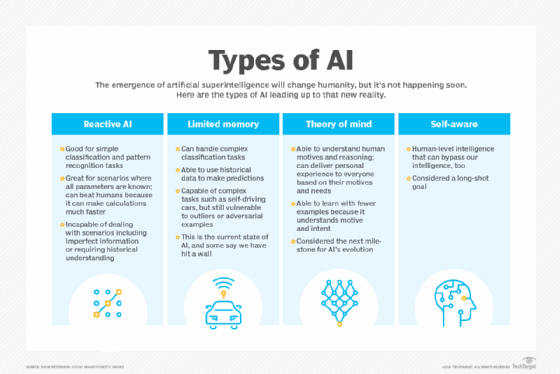
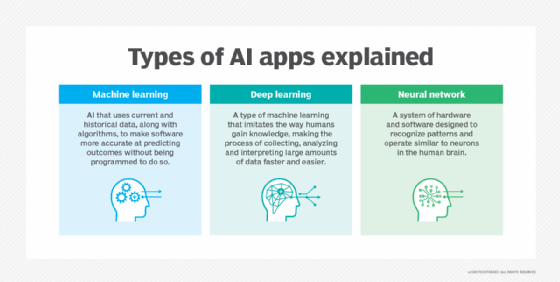
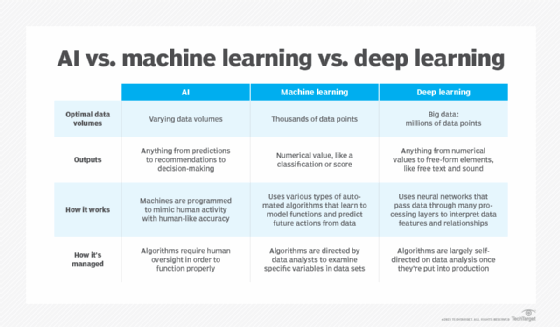
- IOT (The Internet Of Things):
- The Internet of Things (IoT) refers to a system of interrelated, internet-connected objects that are able to collect and transfer data over a wireless network without human intervention.
- Describes the network of physical objects—“things”—that are embedded with sensors, software, and other technologies for the purpose of connecting and exchanging data with other devices and systems over the internet.
- The Most Popular IoT Devices are:
- Smart watches are the most popular IoT devices. …
- Gaming consoles. …
- Smart TV sets and content streaming devices. …
- Voice control devices. …
- Printers. …
- Cameras. …
- Lighting appliances. …
- Smart thermostats.
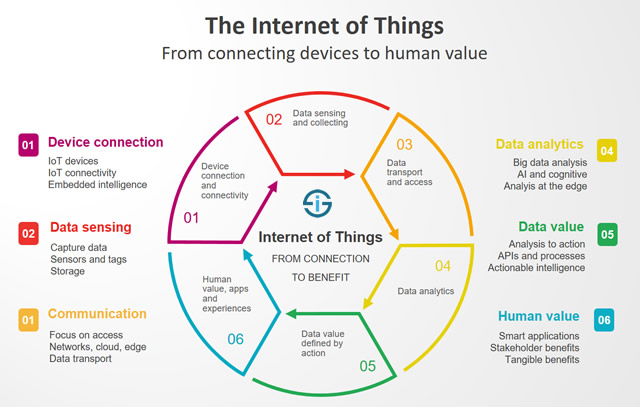
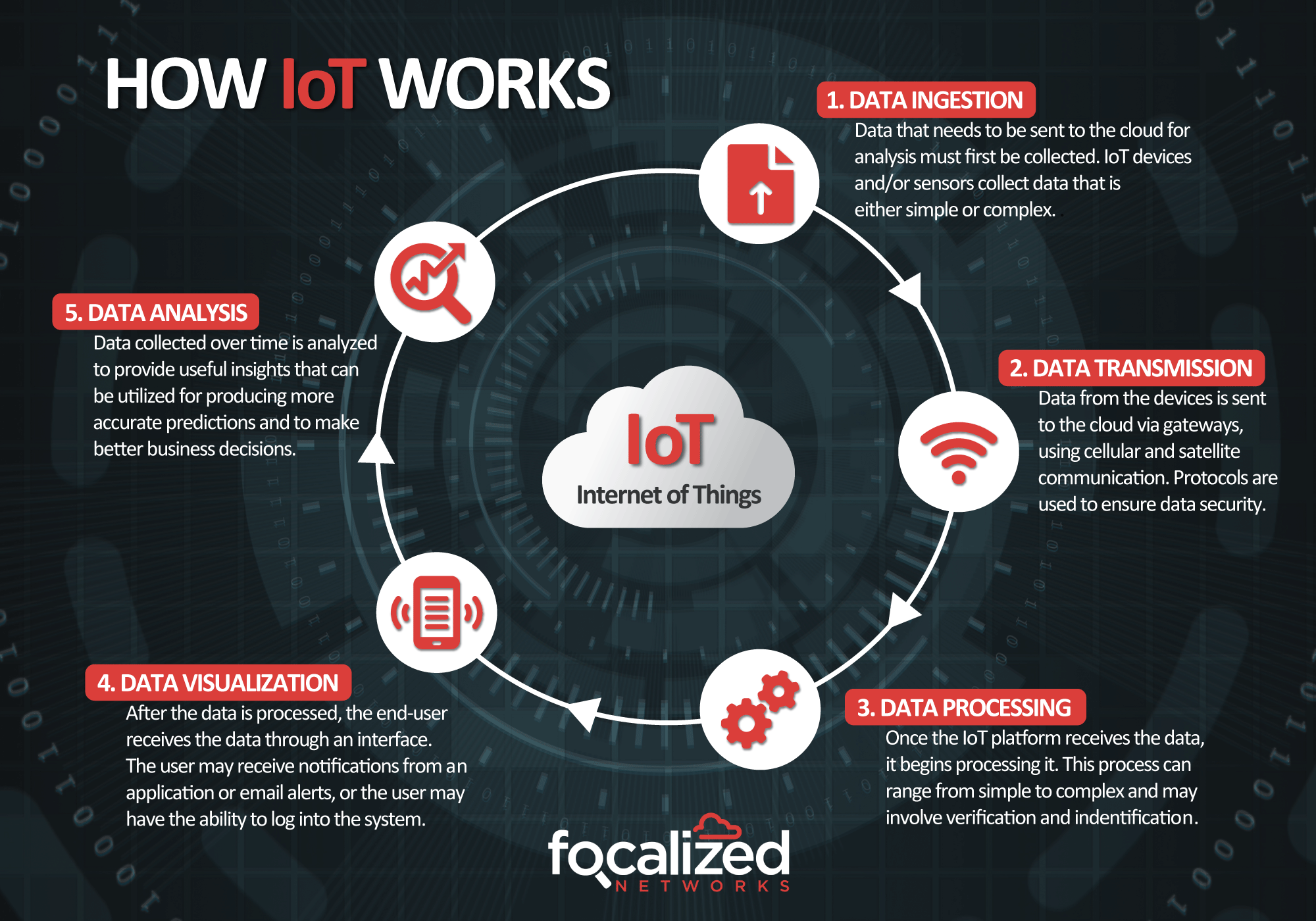
- Industrial IoT Solutions:
- Industrial IoT (IIoT) involves collecting and analyzing sensor-generated data to support equipment monitoring and maintenance, production process analytics and control, and more. In manufacturing IT since 1989, ScienceSoft offers IIoT consulting and development to create secure IIoT solutions.
- IT & OT:
- Information technology (IT) refers to anything related to computer technology, including hardware and software. Your email, for example, falls under the IT umbrella. This form of technology is less common in industrial settings, but often constitutes the technological backbone of most organizations and companies. These devices and programs have little autonomy and are updated frequently.
- Operational technology (OT) refers to the hardware and software used to change, monitor, or control physical devices, processes, and events within a company or organization. This form of technology is most commonly used in industrial settings, and the devices this technology refers to typically have more autonomy than information technology devices or programs. Examples of OT include SCADA (Supervisory Control and Data Acquisition).
- => The main difference between OT and IT devices is that OT devices control the physical world, while IT systems manage data.

